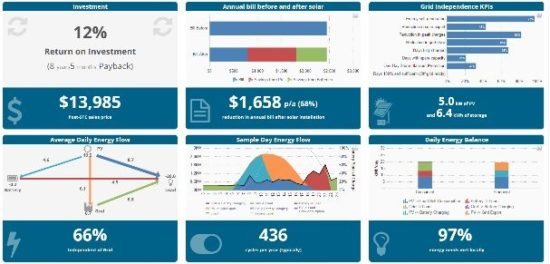
This is part of our series “What is the best strategy to maximise the Return on Investment for your battery?”
In other articles – here, here and here – we’ve examined the best strategies for maximising Return on Investment in your battery. We’ve seen:
- You can’t make enough money from a battery alone to justify its cost – you need to couple it with a PV system which does most of the heavy lifting in terms of ROI.
- Smaller is better when it comes to ROI – as the battery acts to drag down the ROI of a PV system, so a smaller battery drags down the ROI less
- In order to maximise your ROI its best to discharge during Peak and Shoulder periods, though of course the answer also depends on the price of peak and shoulder electricity in your area.
- Discharging your battery during off-peak periods to ensure it is 100% available to soak up excess solar energy sounds like a good idea on face value (better to sell at 13c/kWh than earning only 6c/kWh for your excess solar), but you’re probably prematurely aging your batteries for almost negligible extra revenue.
We’ve seen that arbitrage can generate a reasonable amount of revenue on its own, but not enough to justify the batteries in the absence of PV. But what about doubling the batteries’ utilisation by pre-charging from off-peak electricity to cover early morning loads then re-charging from the sun to cover evening loads? Couldn’t sneaking in an extra cycle in the morning act to increase my revenue and accelerate my payback?
Again, let’s investigate this using our PVsell software. We’ll use the same situation as before – a north-facing 5kW PV system with 6.4kWh Tesla battery with total system price of $13985, in Sydney with 52.8c/kWh for Peak electricity (2-8pm weekdays), 21.5c/kWh for shoulder (7am-2pm; 8pm-10pm weekdays and 7am-10pm weekends) and 13.2c/kWh off-peak, with consumption profile of a home-office with an above-average consumption of 20kWh/day. We’ll discharge the battery during peak and shoulder periods only.
As seen below, our starting point (with no pre-chargin from off-peak) generates $1769 in annual revenue, and cycles the battery 461 times per year (multiple cycles occur on cloudy days), we genreate 108% of our total energy consumption and are 69% independent of the grid. Note, too, that already 31% of days we don’t fully discharge our battery – one such day is illustrated were the battery level is higher than the evening’s load before off-peak times kick in.

That was the situation without pre-charging from off-peak power, now lets see if we can increase our revenue by performing arbitrage – charging from off-peak tariffs overnight. The results below depict the situation if we charge our battery to 100% of uts capacity overnight. You can see:
- The number of cycles has leapt to 650 per year
- Our self-sufficiency has decreased – because we have increased the amount of power we are drawing from the grid we now only generate 85% of our energy needs and we only meet 58% of our instantaneous needs from solar or battery.
- Our battery is actually idle for most of the day, our solar power is exporting as much as it did without the battery
The reason for all of this is because our battery isn’t discharging in the morning. Why? If we look at our earlier chart we can see that by 8am we are already generating more than we are consuming.

PVsell does allow you to pre-charge to any level you like, and pre-charging to 50% produces better outcomes than pre-charging to 100%. But the best outcome of all for this consumption profile and tariff structure is no pre-charging at all.
In short, the idea of sneaking in a battery cycle first thing in the morning doesn’t bear fruit, because most households are already exporting energy during their morning peak. Now, if you’re a business with a large morning peak that means you’re not exporting first thing, then you might draw some advantage from arbitrage – particularly if there’s a large difference between the power price at night and in the morning. But make sure you account for your individual circumstances and obtain accurate calculations, because otherwise you might be sending yourself backwards.
Which way should I face my system if I’m getting a battery
West

North

East is better than west with battery, compare to without battery

Warwick Johnson is head of Sunwiz, which develops and markets the PVSell product.


